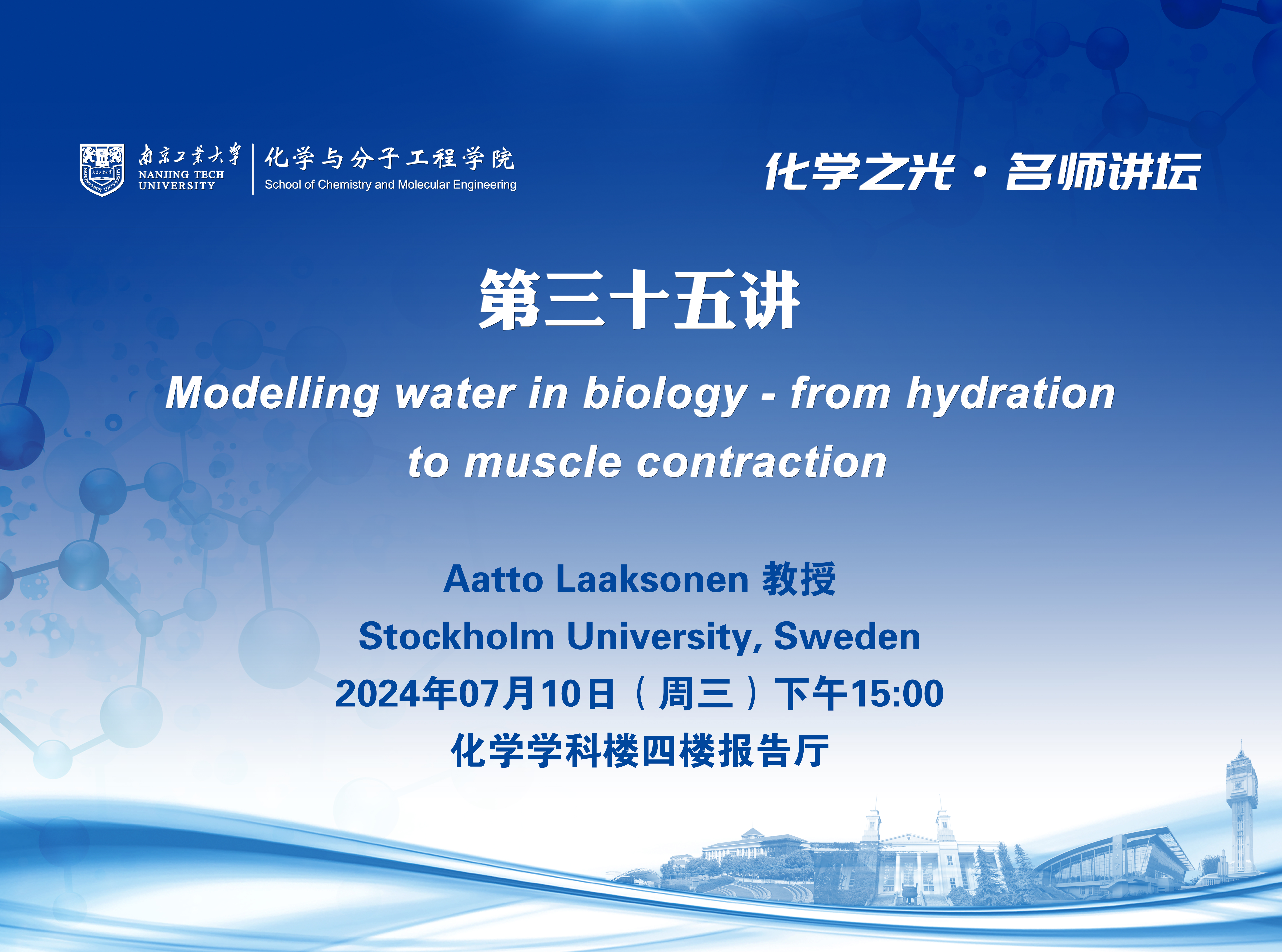
Modelling water in biology - from hydration to muscle contraction
时间:2024年7月10日下午15:00
地点:化学学科楼四楼报告厅
报告人简介:
Aatto Laaksonen is a Professor in Physical Chemistry at Stockholm University; BSc in Mathematics, at Stockholm University; PhD in Physical Chemistry, at Stockholm University 1981. He masters virtually all computer modelling and simulation methods used in materials and bio-sciences. His group has developed many novel methods and computational schemes and in particular, a hierarchical multiscale tool to connect length and time scales from first-principles simulations to the mesoscopic modelling of soft matter and beyond. He has produced 350+ scientific articles, 20+ Book chapters & review articles. There are 12650+ citations and the H-index is 54 (Google scholar – June 2024).
报告摘要:
Life has an aqueous origin and consequently all biology on Earth make use of the unique chemical and physical properties of water. There are good reasons why our bodies contain ca 70% water. Dehydrated biomolecules stop quickly working. For example, at normal living conditions for each gr. of proteins and nucleic acids, 0.3-0.5 gr. of water is required in their hydration shells. Substantial amounts of highly restraint water molecules, with extensively long residence times, can be detected in crystallography and spectroscopy in the closest vicinity of biomolecules. What their eventual functions there are has been a vital area of research in decades. Here we give an example, based on molecular thermodynamics, of the role of restraint water within myosin, and suggest its role in muscle contraction to momentarily store the chemical energy from ATP hydrolysis as electric energy before it is converted to mechanical energy in the power stroke by the myosin-actin motor1 and suggest how to use computational chemistry2 to study it in more details. This is a topic of debate and there is still no clear consensus of how the large amount of energy provided by ATP is transformed to enable mechanical motion without losing much of it as heat when we use our muscles.
References
[1] Lampinen M. J. and Noponen T. Electric dipole theory and thermodynamics of actomyosin molecular motor in muscle contraction. (2005) Journal of Theoretical Biology 236, 397–421
DOI: 10.1016/j.jtbi.2005.03.020
[2] Laaksonen A. and Mocci F. Molecular Dynamics Simulations and Reaction Rates,
in “Comprehensive Computational Chemistry” (Eds. M. Yáñez & R. J. Boyd),
Elsevier, 2024, pp. 315-328
https://doi.org/10.1016/B978-0-12-821978-2.00130-6
